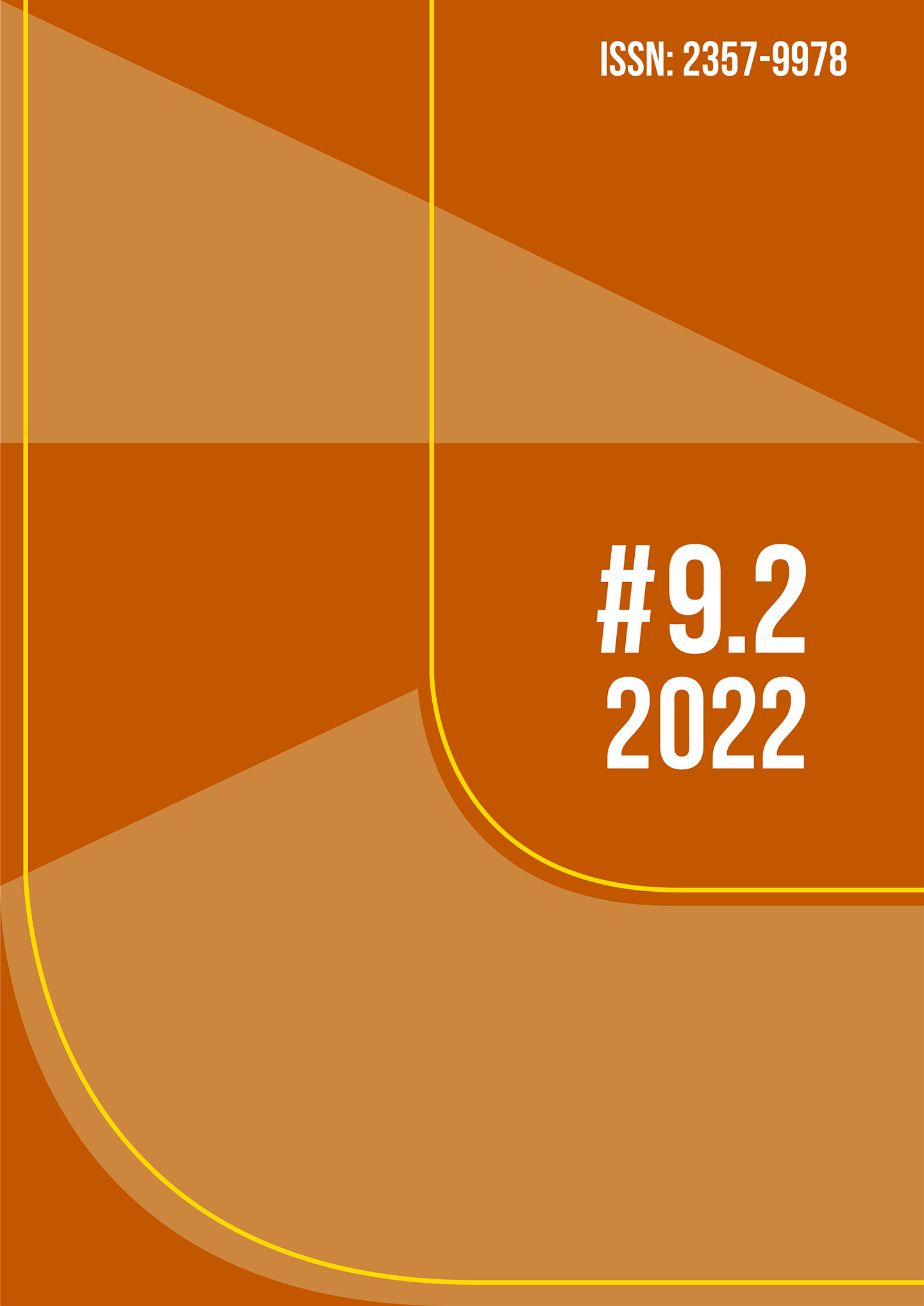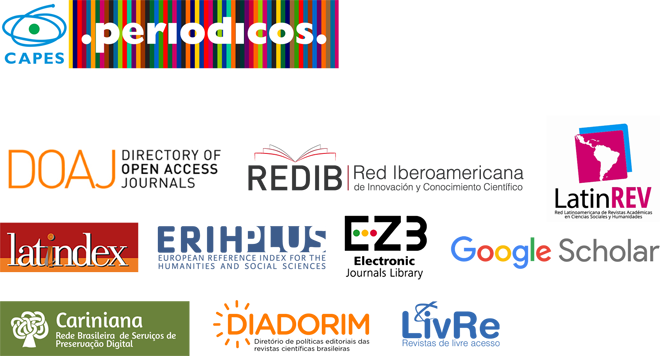"Cobertores": o parangolé de Carmen Luz no pensamento coreográfico contemporâneo
DOI:
https://doi.org/10.36025/arj.v9i2.28705Palavras-chave:
Cobertores, Parangolé, pensamento coreográfico, Carmen Luz, Cia. Étnica de DançaResumo
Cobertores, espetáculo de Carmen Luz, tem como referência e intercessor poético o Parangolé, de Hélio Oiticica, evidenciando a emergência e a cartografia de um pensamento coreográfico como crítica social e experimentação cênica. A experimentação colocou em evidência a incorporação coreográfica a partir de três marcadores sociais: negritude como diferença étnica, juventude como condição etária e morro como alteridade espacial na cidade contemporânea. Metodologicamente, parte-se da abordagem teórica da dança como pensamento do corpo e adota-se a cartografia como método de produção ético-estética. Modelizamos uma metacartografia como procedimento para analisar o processo de dar-se intercessores artísticos com que Luz assina esta obra e insere a Cia. Étnica de Dança nas artes cênicas no início do século XXI. Memórias dessa experiência coreográfica se atualizam em dois desdobramentos, na medida em que Luz produz comentários sobre a própria carreira em registros audiovisuais e quando acionamos lembranças de montagens e diálogos realizados.
Downloads
Referências
BERGSON, Henri. Matéria e Memória: Ensaio sobre a relação do corpo com o espírito. Tradução: Paulo Neves. São Paulo: Martins Fontes, 1999.
DAMATTA, Roberto. O que faz o brasil, Brasil? Rio de Janeiro, Rocco, 1986.
DELEUZE, Gilles. Conversações. Tradução: Peter Pal Pélbart. São Paulo: Editora 34, 1992.
DOS ANJOS, Moacir. As ruas e as bobagens: anotações sobre o delirium ambulatorium de Hélio Oiticica. ARS (São Paulo), v. 10, n. 20, p. 22-41, 2012. Disponível em: https://doi.org/10.11606/issn.2178-0447.ars.2012.64418. Acesso em 24 jan. 2022.
ESPÍRITO SANTO, Denise. Diáspora, poesia e africanidades nos espetáculos da Cia. Étnica de Dança Teatro. Concinitas, ano 12, v. 1, n. 18, jun. 2011, p. 157-165. Disponível em: https://www.e-publicacoes.uerj.br/index.php/concinnitas/article/view/59604/37777. Acesso em: 12 jan. 2022.
FIGUEIREDO, Luciano. The world is the museum: Apropriation and transformation in the work of Hélio Oiticica. In: RAMIREZ, Mari Carmen. Hélio Oiticica: The body of colour. London: Tate Publishing and The Museum of Fine Arts, 2007, p. 105-125.
GUATTARI, Félix. Caosmose: Um novo paradigma estético. Rio de Janeiro: Ed. 34, 1992.
KATZ, Helena. 1, 2, 3: A dança é o pensamento do corpo. Belo Horizonte: FID Editorial, 2005.
LE GOFF, Jacques. História e Memória. Campinas: Editora da Unicamp, 1996.
LUZ, Carmen. A escrita do corpo negro: Ciência & Letras. [Entrevista a Renato Farias]. Canal Saúde Oficial, 16 jan. 2019. Disponível em: https://www.youtube.com/watch?v=VK7z64cz37o. Acesso em: 25 jan. 2022.
LUZ, Carmen. Depoimento. In: FERREIRA, Cláudia; HOLLANDA, Heloísa Buarque de; CIRO, Numa (org.). A nova expressão das mulheres da periferia: Relatório de Projeto. Rio de Janeiro: Centro de Atividades Culturais, Econômicas e Sociais, 2019. Disponível em: http://www.memoriaemovimentossociais.com.br/sites/default/files/publicacao/a_nova_expressao_das_mulheres_da_periferia.pdf. Acesso em 19 jan. 2021.
LUZ, Carmen. Cia. Étnica de Dança e Teatro Bl.1/2, s.d. Cultura Urbana TV Alerj. [Entrevista a Ricardo Brasil]. Disponível em: https://www.youtube.com/watch?v=EVtzUeAljsE. Acesso em 20 jan. 2022.
LUZ, Carmen. Cia. Étnica de Dança e Teatro Bl. 2/2, s.d. Cultura Urbana TV Alerj. [Entrevista a Ricardo Brasil]. Disponível em: https://www.youtube.com/watch?v=sVhof92kg2k. Acesso em: 20 jan. 2022.
LUZ, Carmen; ASBEG, José Carlos. Sobre Viventes (Festival Internacional de Teatro 5ª Edição). Vídeo de 18 minutos e 47 segundos postado por José Carlos Asbeg [s.d.]. Direção coreográfica de Carmen Luz e direção de vídeo e fotografia de José Carlos Asbeg. Disponível em: https://www.youtube.com/watch?v=JRdlYGYd7h8. 16 out. 2004. Acesso em 15 fev. 2022.
LUZ, Carmen; LIMA, Renata Lima: O negro na dança (Diálogos Ausentes 2017). Itaú Cultural. Disponível em: https://www.youtube.com/watch?v=g_4Cn-TsGPk. Acesso em 20 jan. 2022.
MILLIET, Maria Alice. Lygia Clark: Obra-objeto. São Paulo: Edusp, 1992.
MAUSS, Marcel. Sociologia e Antropologia. São Paulo: Cosac Naif, 2003.
MATURANA, Humberto; VARELA, Francisco. A árvore do conhecimento: As bases biológicas do entendimento humano. Campinas: Editorial Psy, 1995.
NATALINO, Marco Antônio Carvalho. Estimativa da população em situação de rua no Brasil. Rio de Janeiro: Instituto de Pesquisa Econômica e Aplicada, 2016. Disponível em: http://repositorio.ipea.gov.br/bitstream/11058/7289/1/td_2246.pdf. Acesso em 02 fev. 2022.
OITICICA, Hélio. Aspiro ao grande labirinto. Rio de Janeiro: Rocco, 1986.
PEREIRA, Roberto. [Texto de apresentação]. In: PANORAMA RIOARTE DE DANÇA, 9., 2000, Rio de Janeiro. [Programa]. Rio de Janeiro: Prefeitura da Cidade do Rio de Janeiro; Secretaria Municipal de Cultura do Rio de Janeiro; RioArte, 2000. p. 12.
PINHO, Rachel Tegon de. O Brasil nunca foi ao Brazil, o Brazil não conhece o Brasil. Estudos de Cultura: Concepções e Abordagens. Macapá: Editora da Unifap, 2021, p. 293-314.
PLATÃO. A República. Trad. Enrico Corisieri. São Paulo: Editora Nova Cultural, 1997.
SALOMÃO, Wally. Hélio Oiticica: Qual é o parangolé? e outros escritos Rio de Janeiro: Rocco, 2003.
VIVADANÇA FESTIVAL INTERNACIONAL. Cia. Étnica (RJ): Vivadança Ano 4. Disponível em: https://www.youtube.com/watch?v=yvjQ76-ChZA. Acesso em 21 jan 2022.
WHITE CHAPEL GALLERY. Catálogo Hélio Oiticica. Londres, 1969.
Downloads
Publicado
Versões
- 07-12-2022 (2)
- 05-12-2022 (1)
Como Citar
Edição
Seção
Licença
Copyright (c) 2022 Yuji Gushiken (Autor)

Este trabalho está licenciado sob uma licença Creative Commons Attribution-NonCommercial-ShareAlike 4.0 International License.

Esta obra está licenciada com uma Licença Creative Commons Atribuição-NãoComercial-CompartilhaIgual 4.0 Internacional.
Autores detêm os direitos autorais ao licenciar sua produção sob Creative Commons Atribuição-NãoComercial-CompartilhaIgual 4.0 Internacional.


 English
English Português (Brasil)
Português (Brasil)
